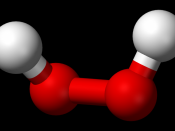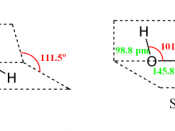Enzymes are biological catalysts. They increase the speed of a reaction, without being affected or altered themselves. Our bodies contain hundreds of enzymes, each catalysing a particular reaction (increasing the reaction's speed), by reducing the amount of energy required to activate the reacting molecules - the activation energy.
Enzymes are very important, and if they were not present, life as we know it would be possible. The core temperature of a healthy human body is only 37oC, and without catalysts, most of the reactions inside the cells of the body would be much too slow to allow life to go on. Only with the addition of enzymes can we digest certain foods and clean our systems. Even though there are many different enzymes, only one kind of enzyme can react with a different substance
If either particle doesn't match, a reaction cannot occur. The particles that an enzyme works on are called the substrate.
Each enzyme has a small area on its surface, which is called the active site. The substrate fits into the corresponding active site on only one type of enzyme. A reaction will then occur and different products are formed. When the substrate joins with the active site, it lowers the energy required for the reaction to take place, allowing the products to be formed more easily
Notice that after the reaction has occurred, the enzyme is free to act on more substrate molecules.
Most enzymes have evolved to work most efficiently at around 37oC. This is the case for catalase. This should be an important factor to be considered in our experiment.
However enzymes are constructed from proteins, which denature from 40oC. Once an enzyme has denatured it becomes useless. This is much the same as cooking an egg. The egg is made of...


